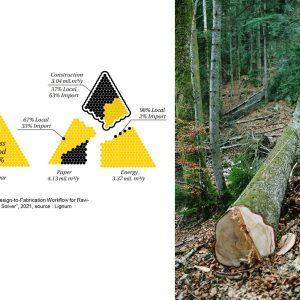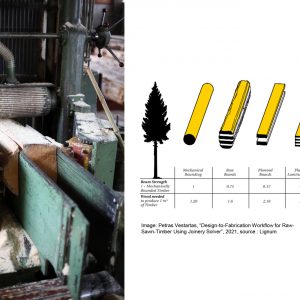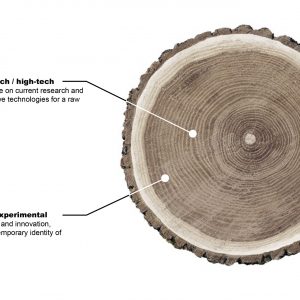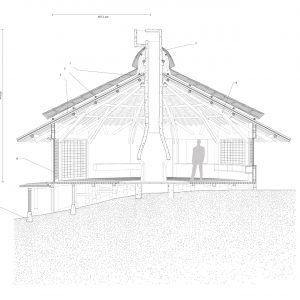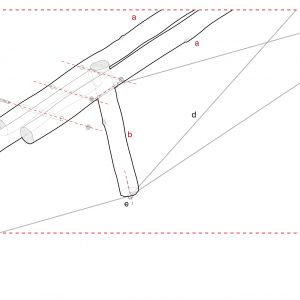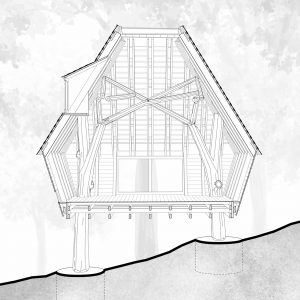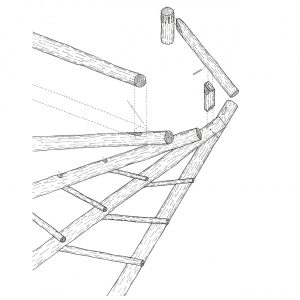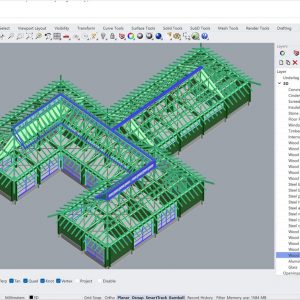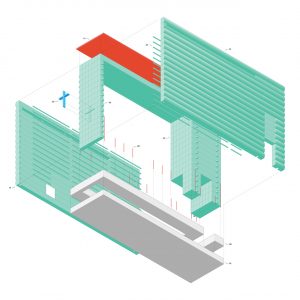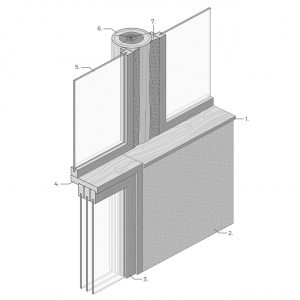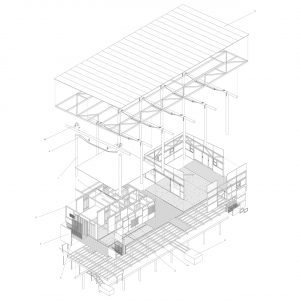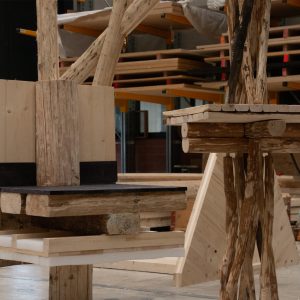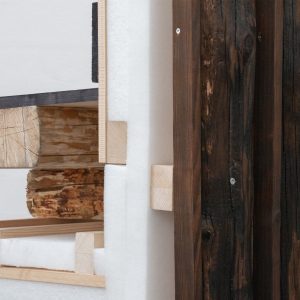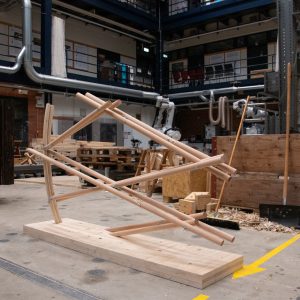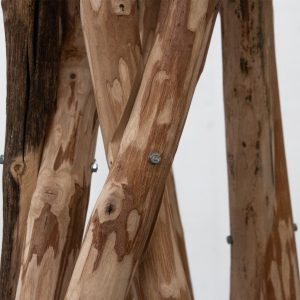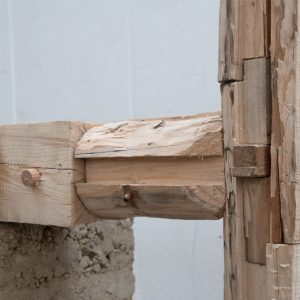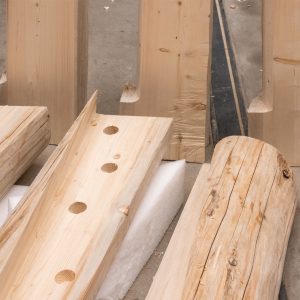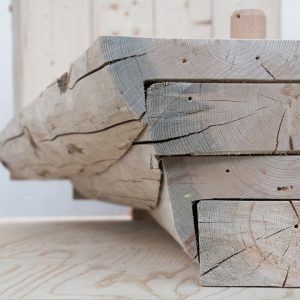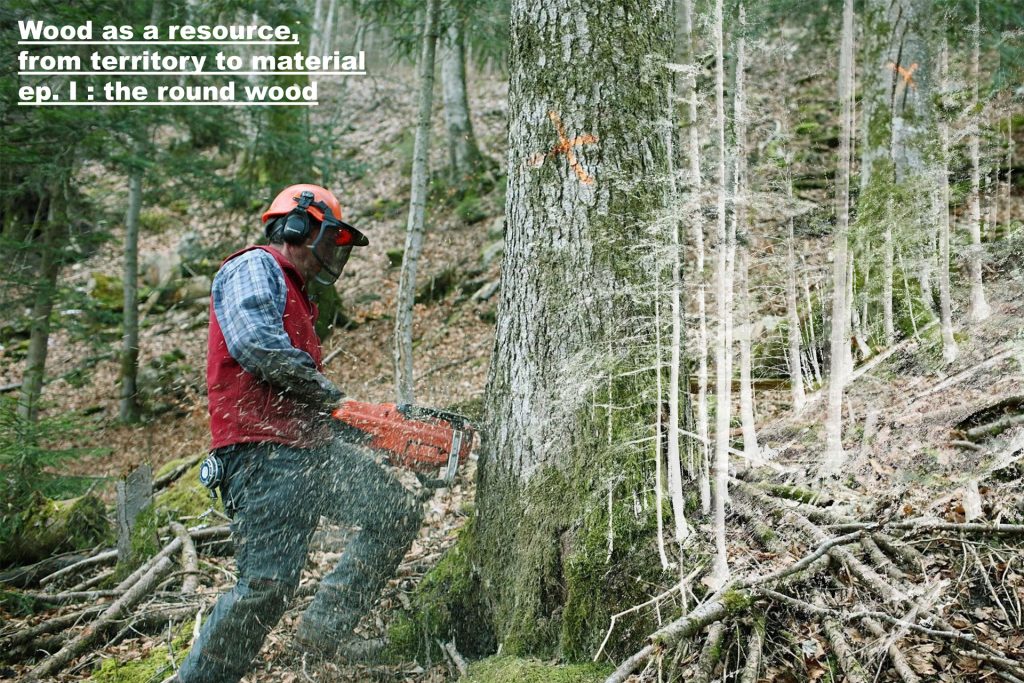
By using a renewable and recyclable resource, wood construction has a better energy balance than other materials such as concrete or metal. However, there are a number of factors that influence this calculation and cast doubt on the environmental virtues of wood construction, such as transport and material processing.
Acting on these factors requires an examination of the wood production cycle. But once this information has been identified, how can we intervene in the production chain? How can we reduce both the number of interventions and the number of kilometers traveled? Which architecture(s), and to what extent, could use a material as close as possible to its raw state?
After working for several years on the subject of timber plate structures (2005-23), the IBOIS laboratory now aims to integrate these issues by focusing on the subject of roundwood: from the extraction of the resource to its integration into the field of architecture.
By offering an open field for experimentation, the workshop becomes the ideal medium for experimentation on an architectural scale. The Weinand studio is thus offering a series of workshops on the theme of wood as a resource, making the link between territory and material. For this first episode, the subject focuses on the exploration of log architecture.
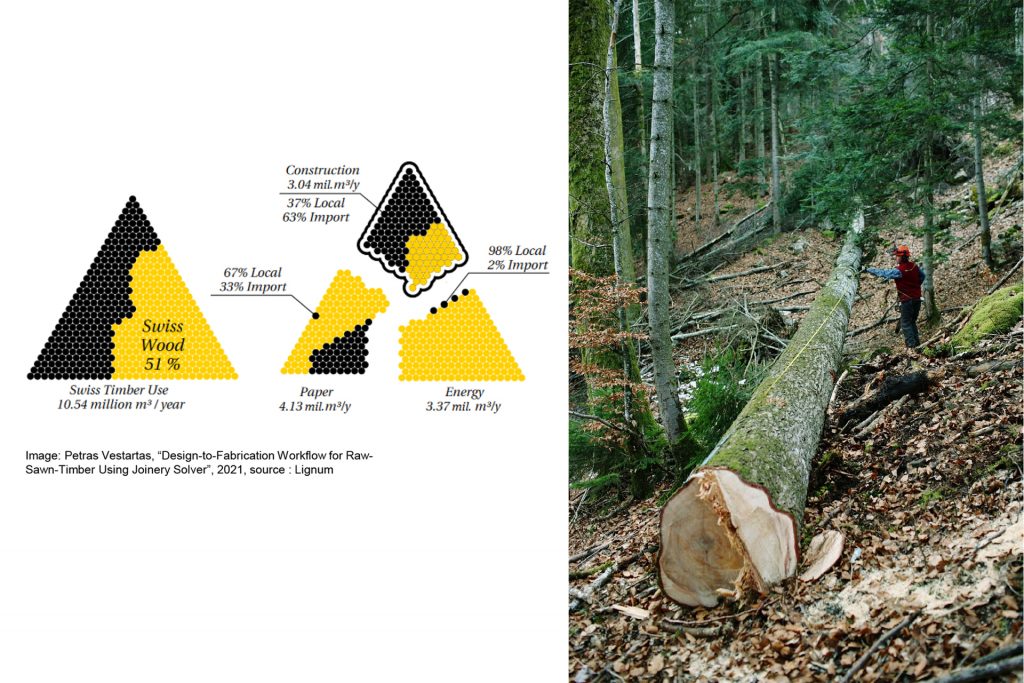
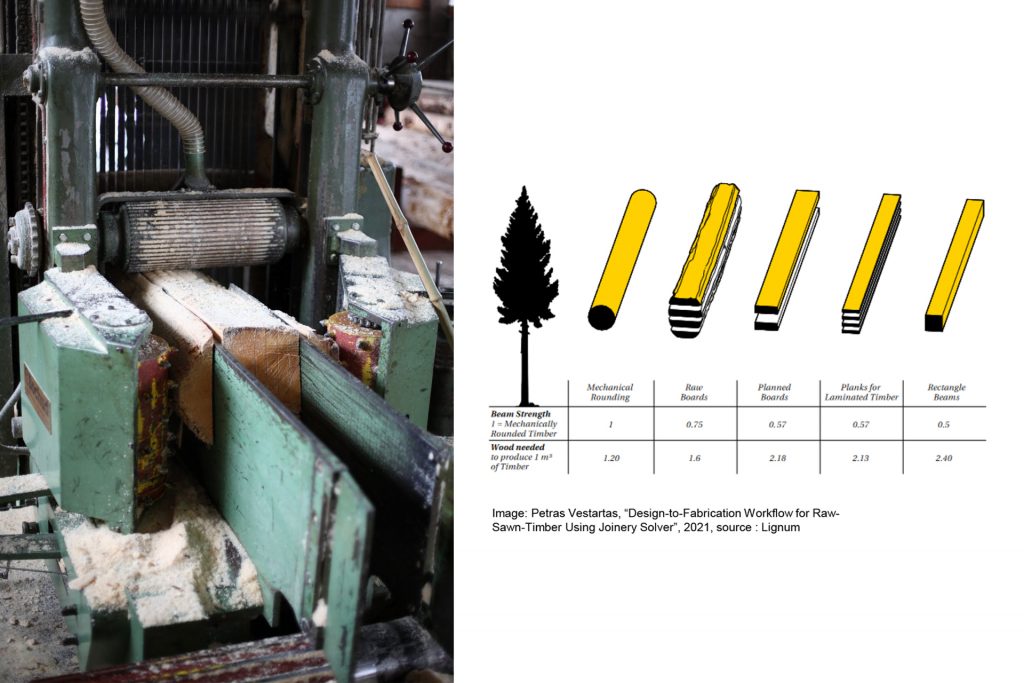
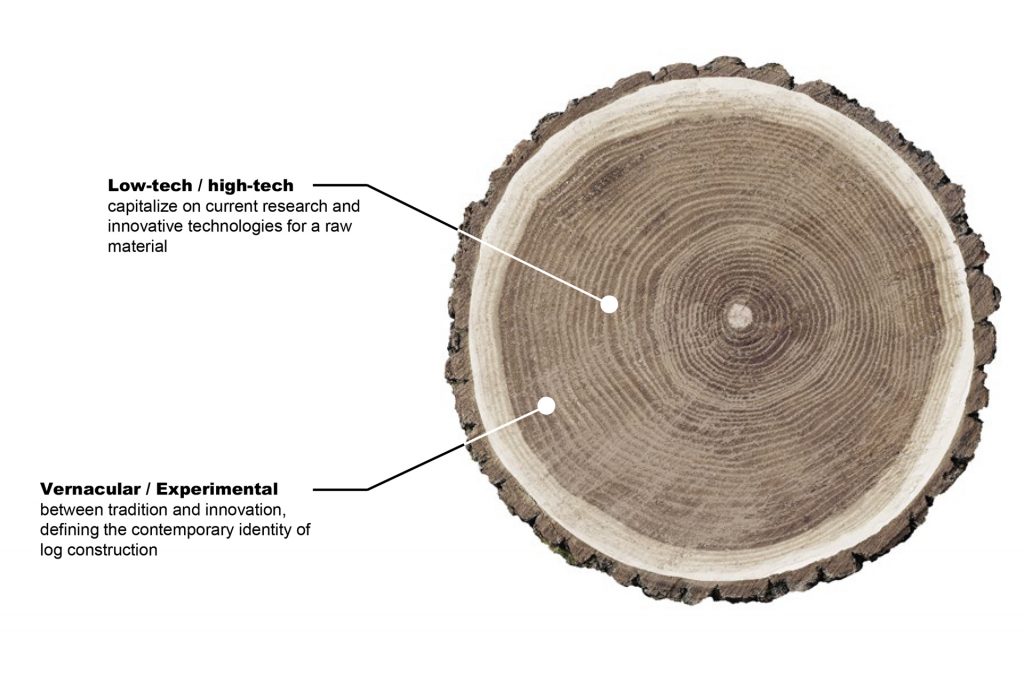
The first phase of the semester is dedicated to the study of precedents. A corpus of projects, built between the beginning of the 20th century and the present day, brings together architectural projects built wholly or partially in round or rough timber. The study consists of a constructive and spatial analysis of the projects, with particular attention to the problems associated with log construction, followed by the production of comparative graphic documents.
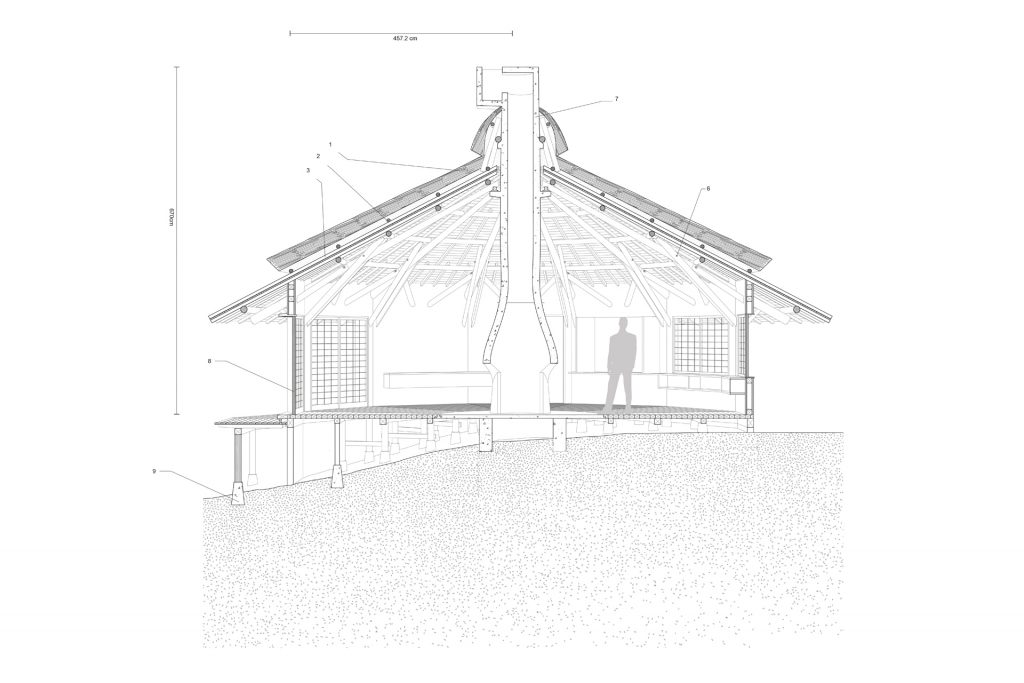
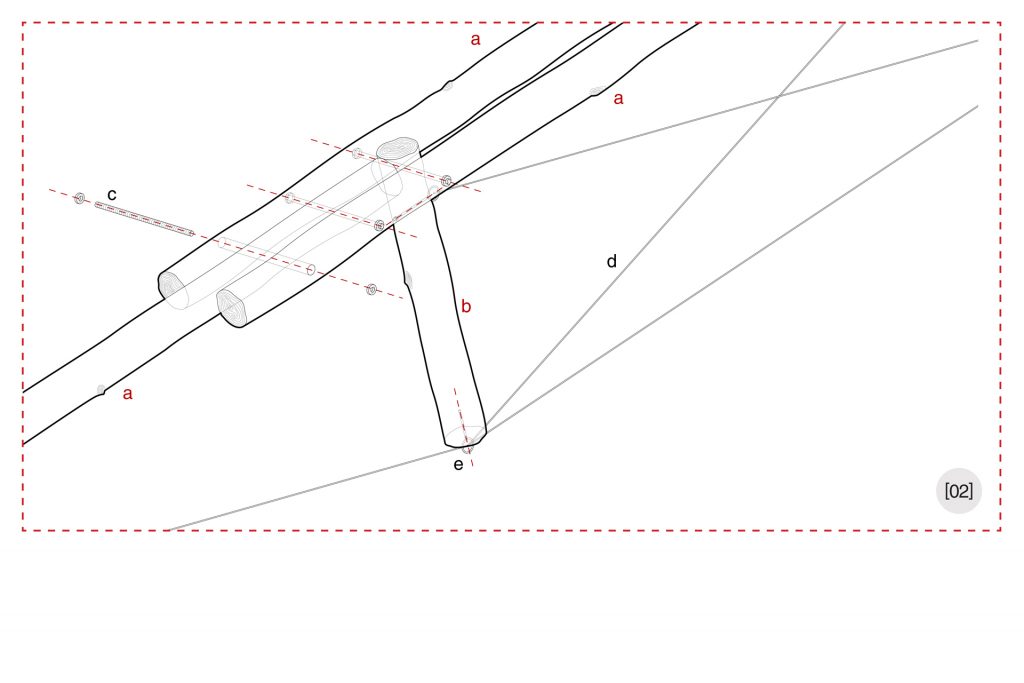
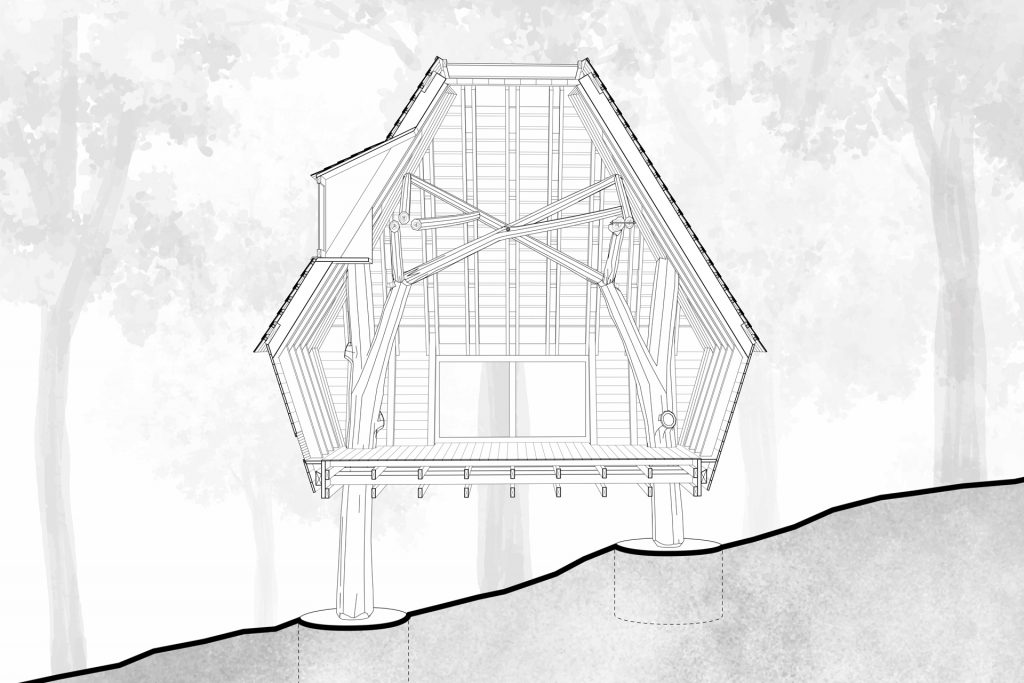
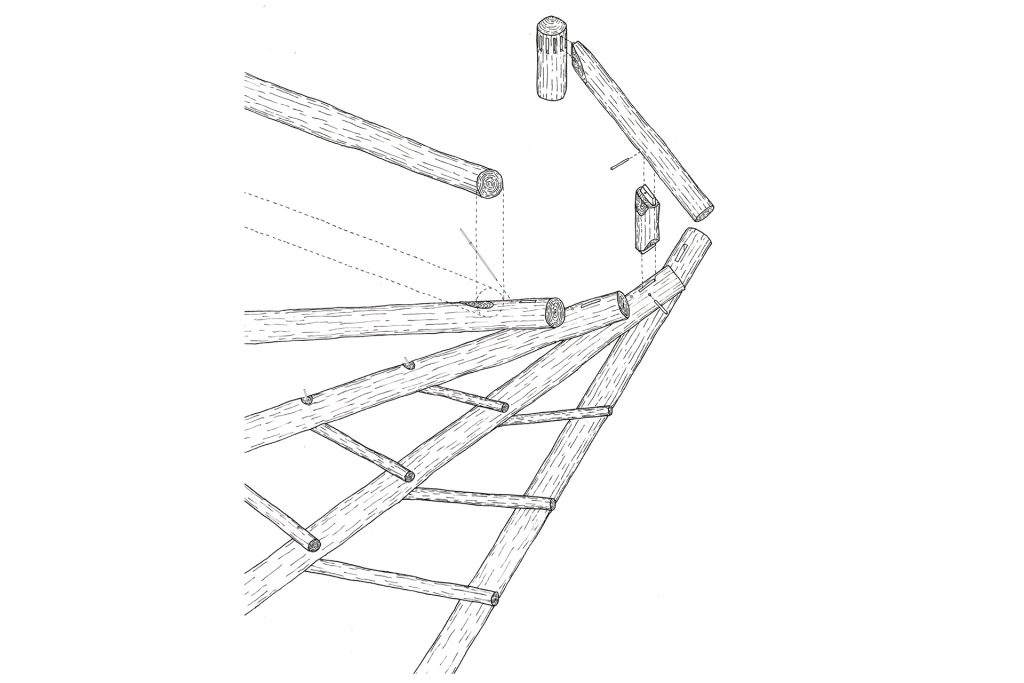
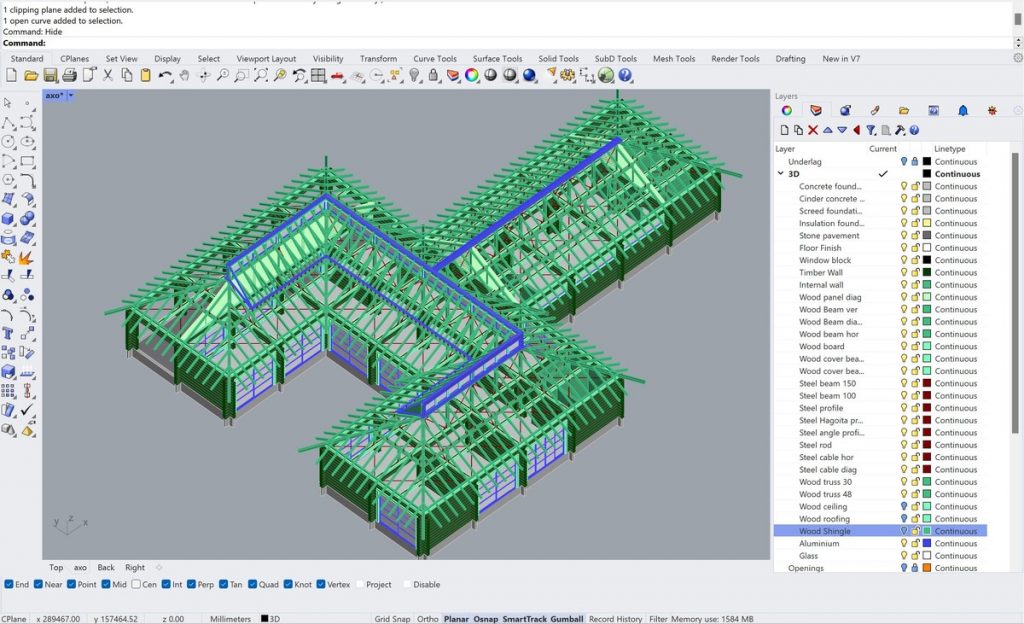
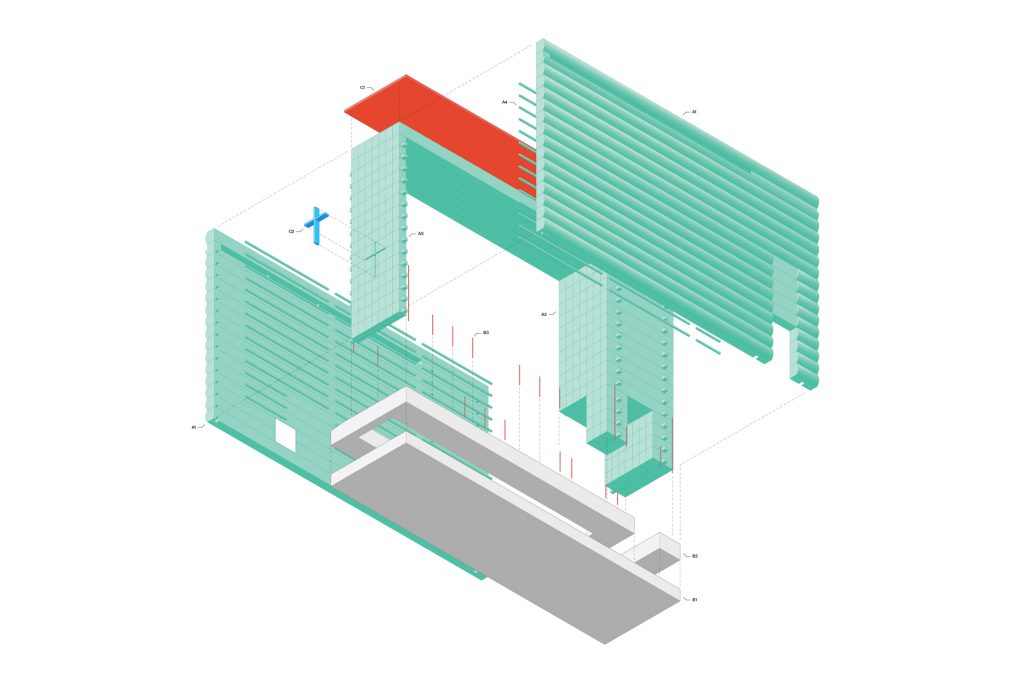
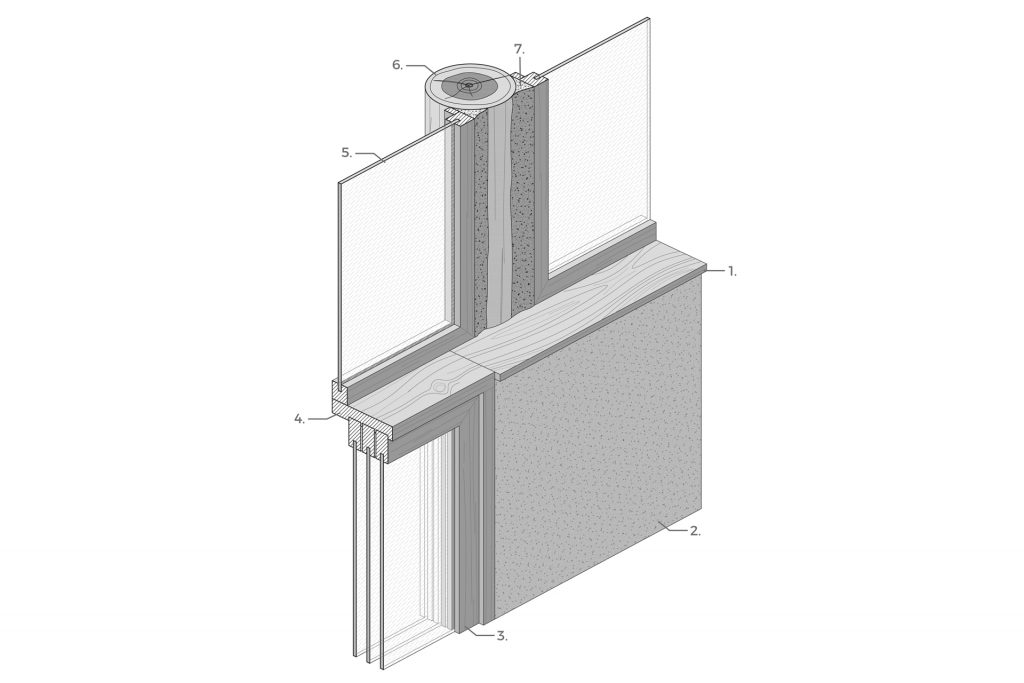
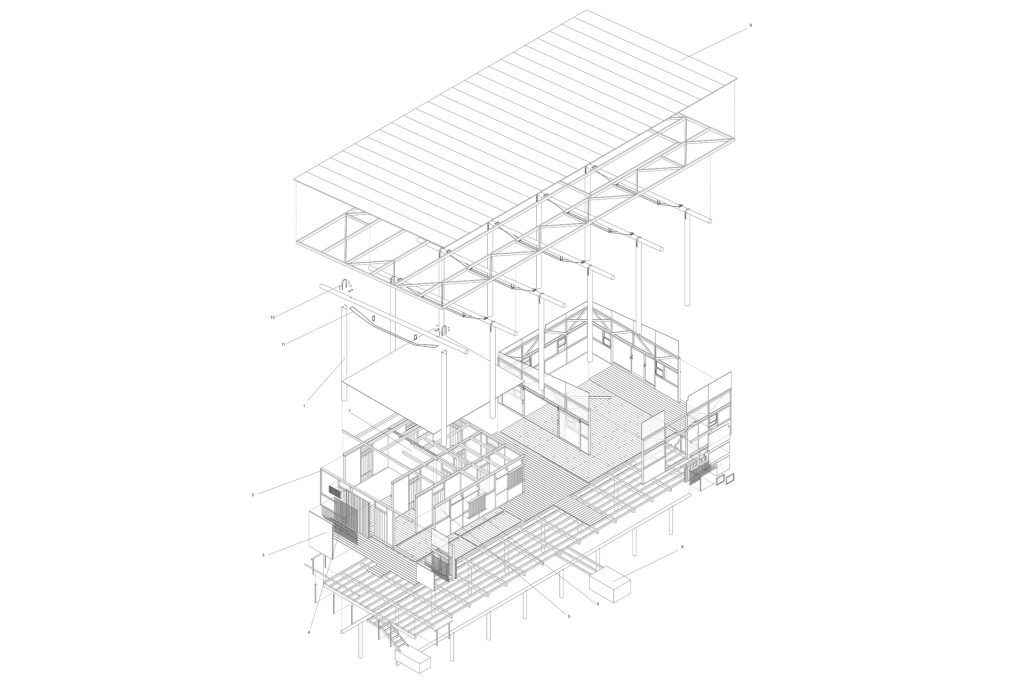
Following the first part of the semester, focused to the study of precedents, the second part is dedicated to the development of a constructive fragment made entirely or in part of round or rough timber.
Indeed, resolving construction at the scale of detail is an integral part of the architectural project equation. The exercise therefore consists in the precise arrangement of materials in relation to each other, to the building’s overall structure, program, volumetry, etc. Because however strong an architecture may be on a spatial or even urban scale, its identity can be contained in the precise and orderly implementation of materials on the scale of detail.
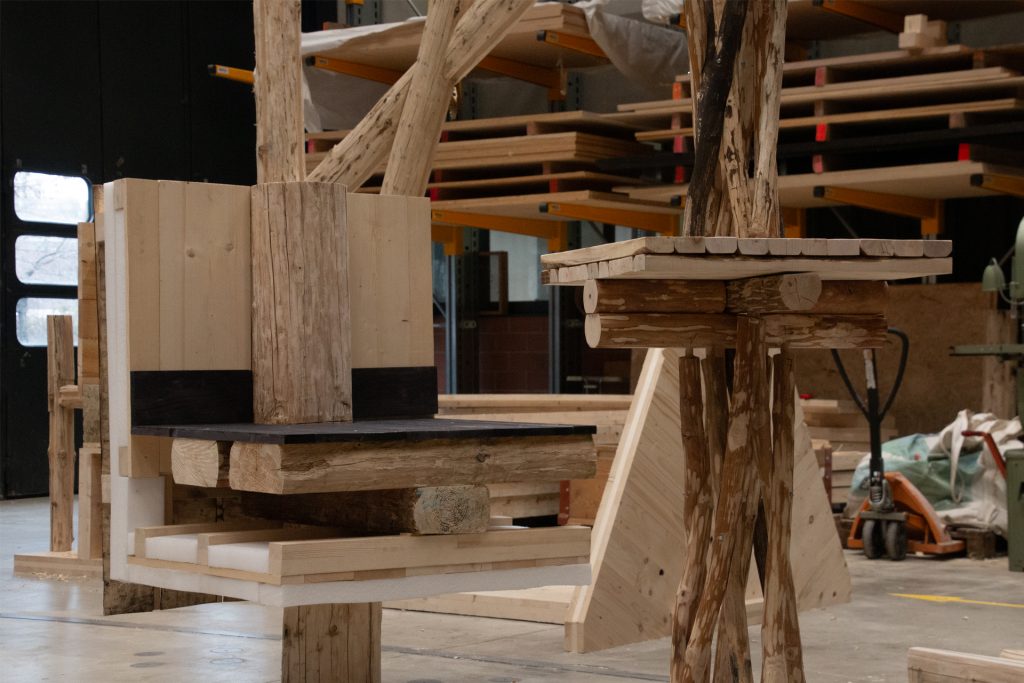
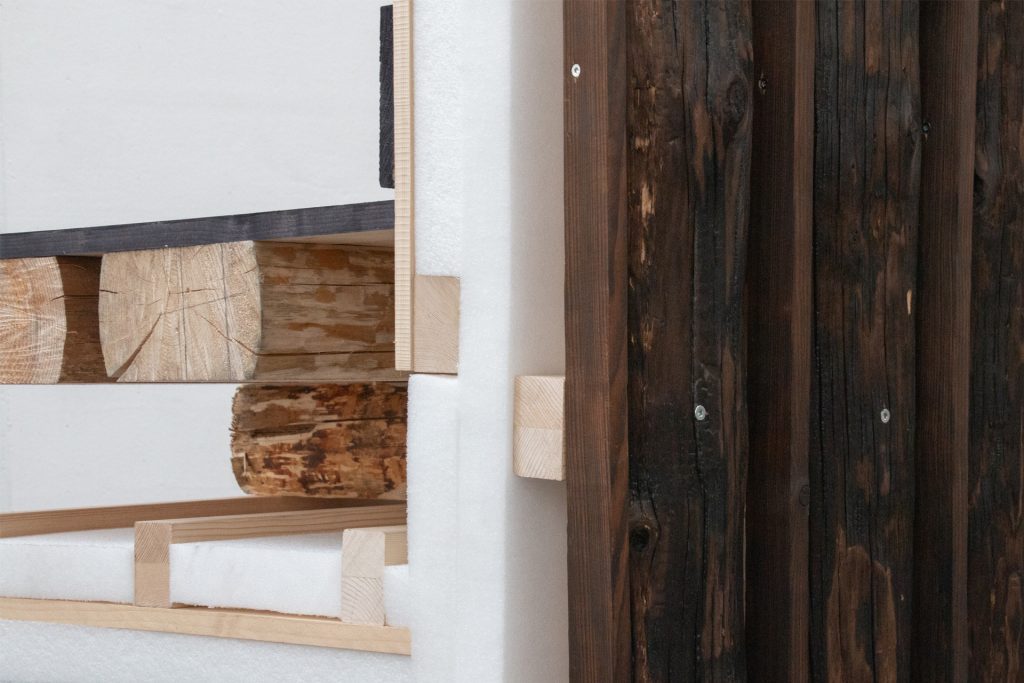
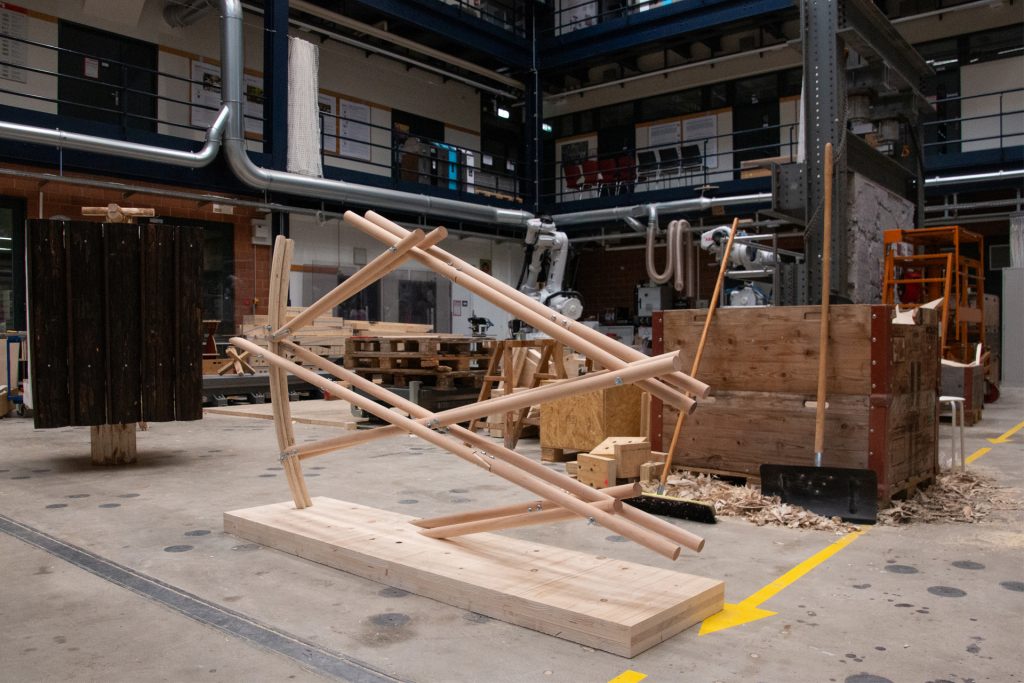
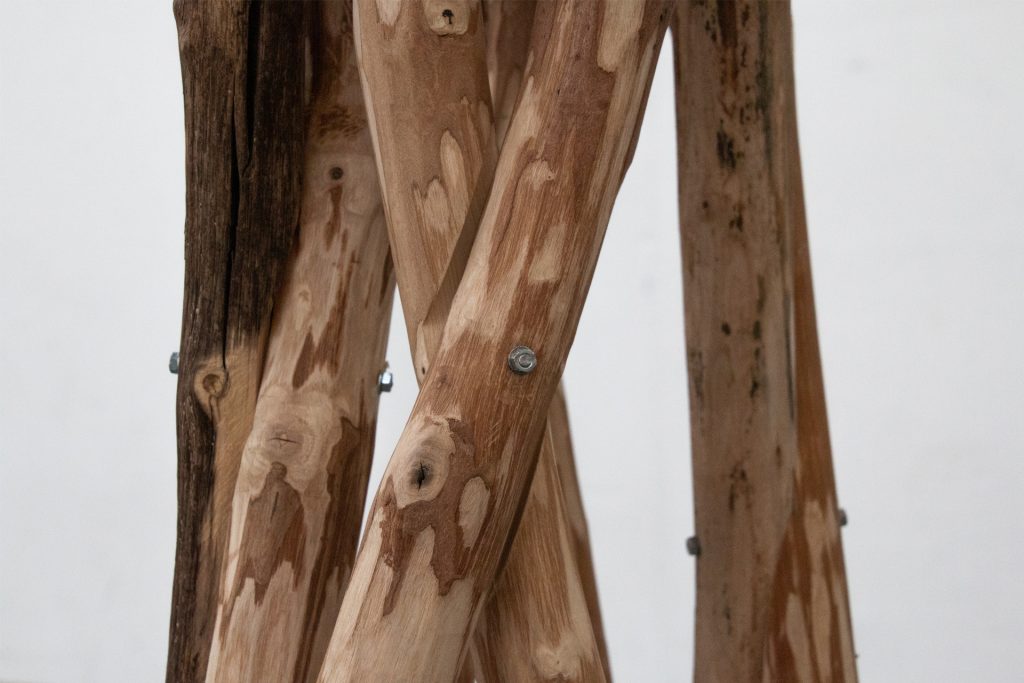
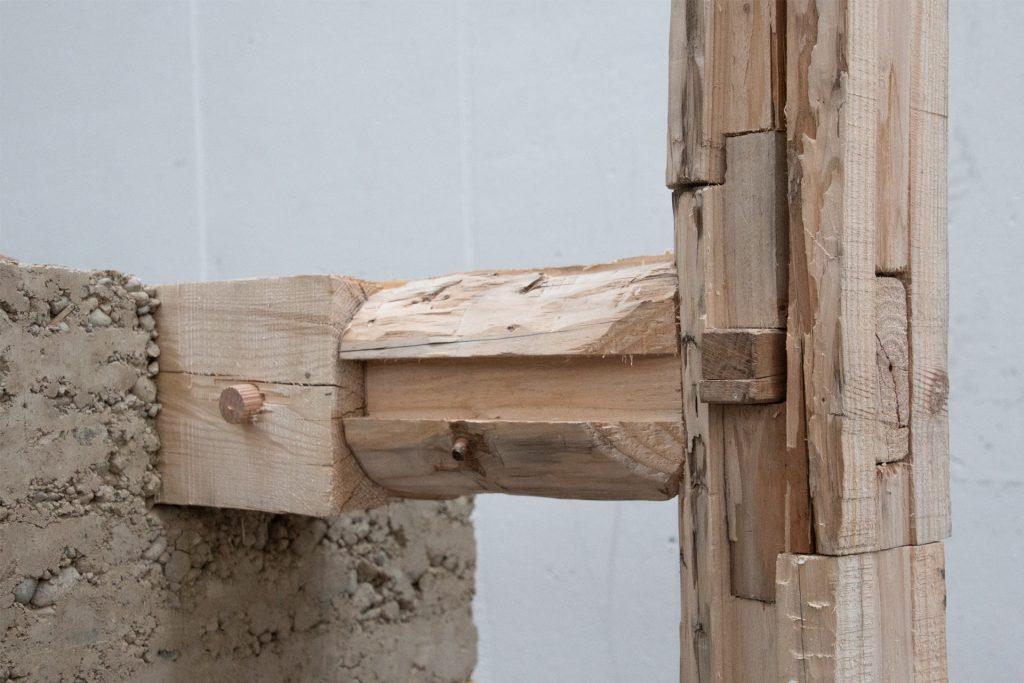
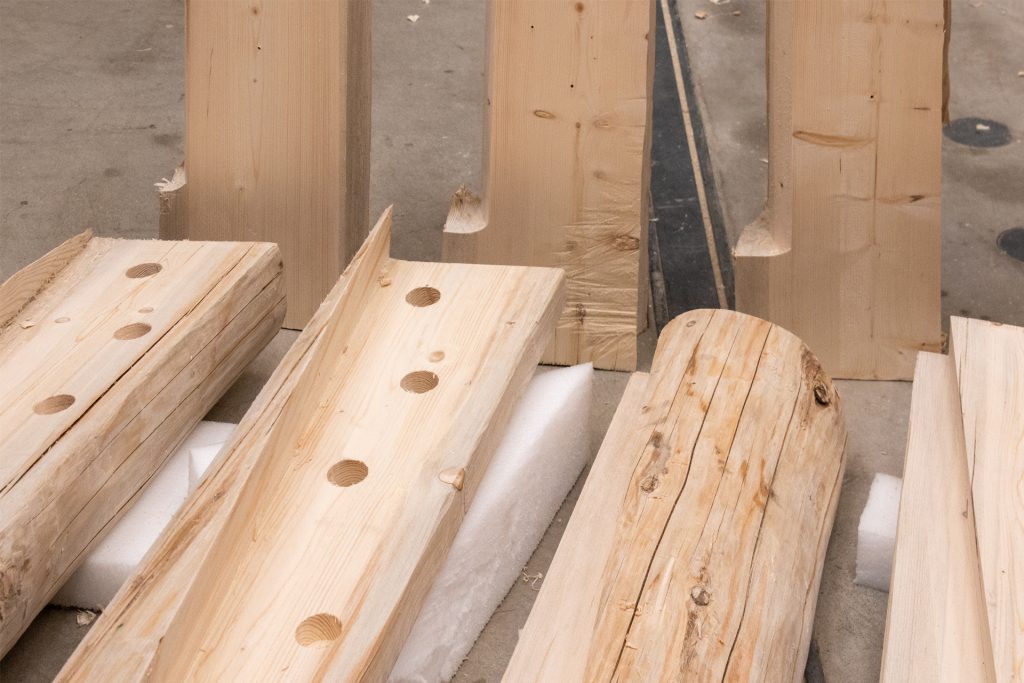
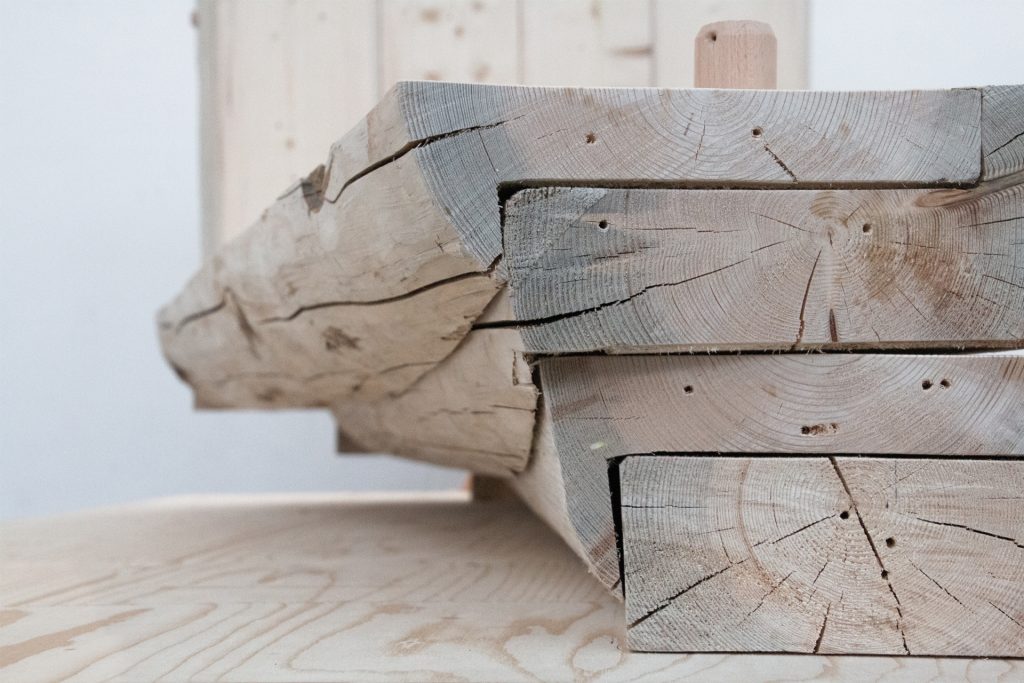
Team
Prof.: Yves Weinand
Assist.: Agathe Mignon
Guests: Véronique Favre
Prototyping and digital wood construction: Damien Gilliard
Students
Assy Albert, Alexandre Baquey, Arthur Billotte, Arthur Breen, Florian Faucheur, Oskar Forsblom, Weifeng He, Oscar Lallier, Jean-Baptiste Rolland, Maxime Thorez
